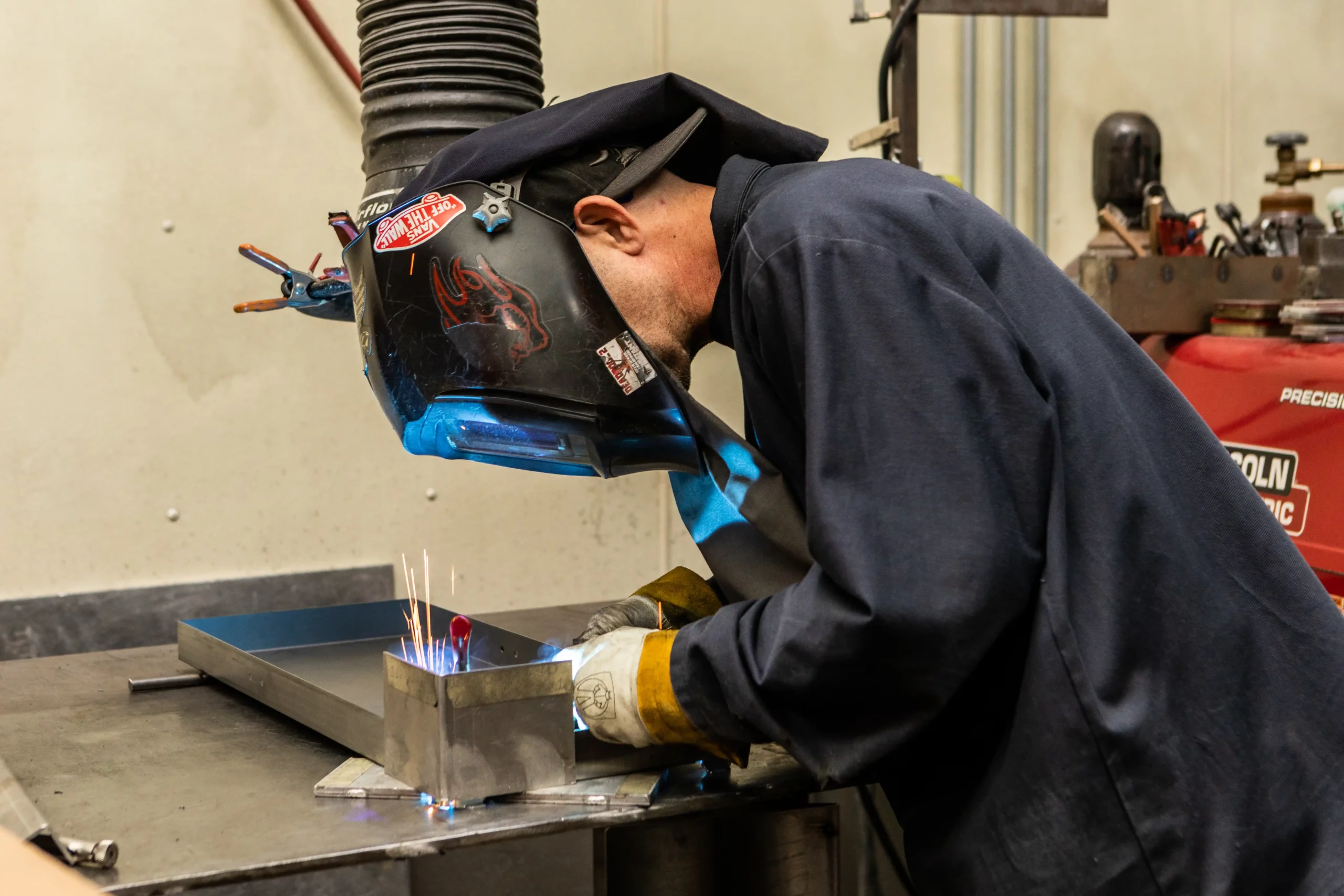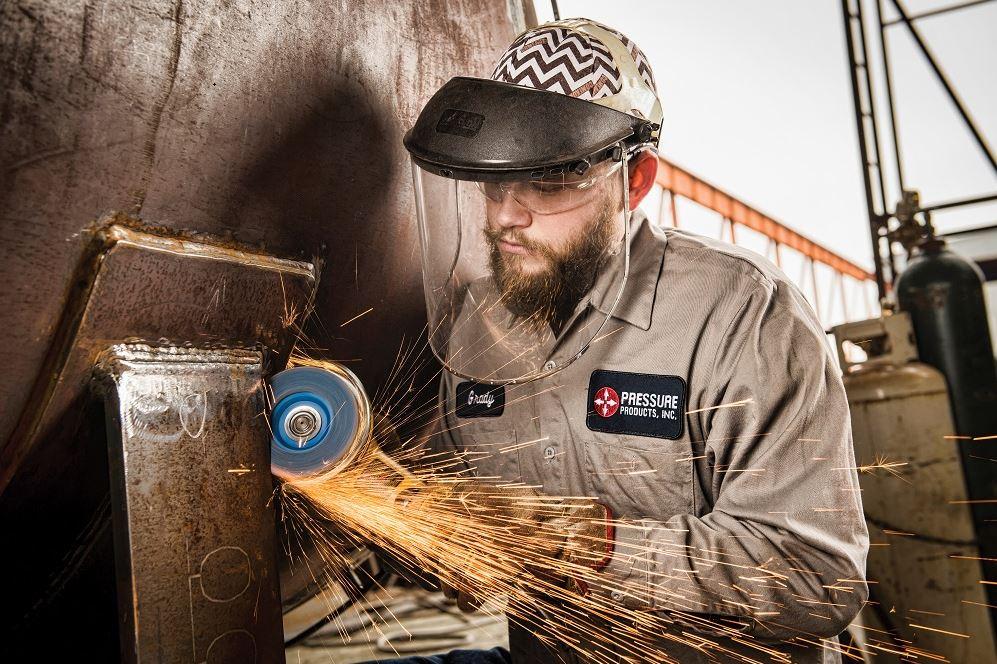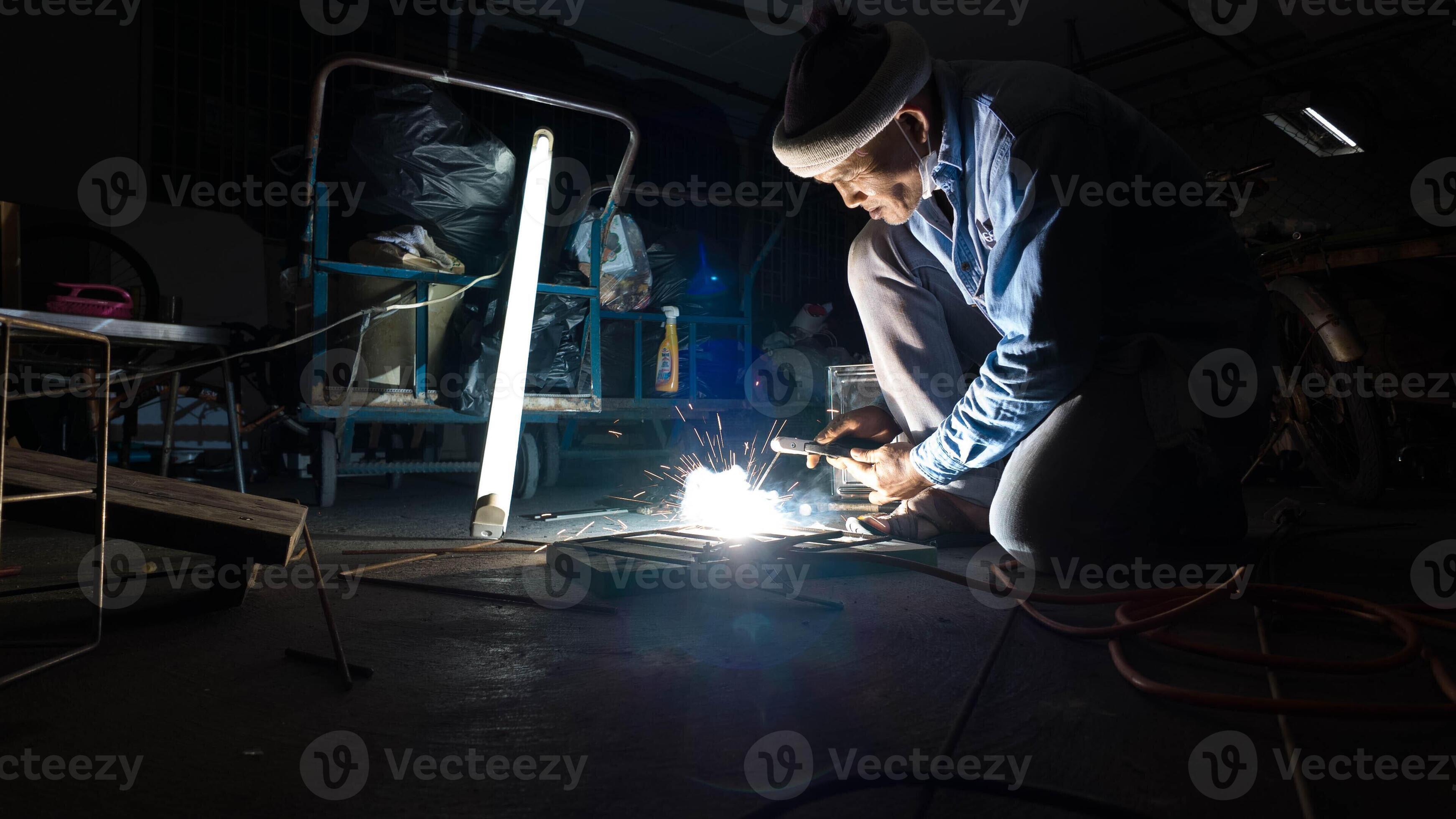Typical Welding Repair Service Issues and How to Address Them Properly
Welding fixings commonly encounter a series of issues that can threaten the integrity of the last item. Typical issues include poor infiltration, porosity, and imbalance, among others. Each problem provides special obstacles that need particular methods for resolution. Understanding these issues is important for welders aiming to enhance their end results and skills. This conversation will certainly discover these usual welding fixing issues and effective approaches to resolve them.
Inadequate Penetration
Poor penetration occurs when the weld steel stops working to completely fuse with the base material, causing weak joints and prospective architectural failures. This issue frequently comes from inadequate warm input, inaccurate electrode angle, or improper welding rate. Welders may experience poor infiltration due to a miscalculation of the necessary criteria for a certain material density or type. In addition, contamination on the base material's surface area can impede effective bonding, worsening the problem. To address poor penetration, welders ought to ensure ideal setups on their equipment and keep a clean work surface. Regular evaluation of welds is recommended to determine any shortages early, permitting timely corrections and the prevention of endangered structural integrity in welded settings up.
Porosity
Porosity is a typical defect in welded joints that materializes as tiny gas bubbles trapped within the weld steel. This defect can jeopardize the honesty of the weld, resulting in decreased toughness and potential failing under tension. Montana Mobile Welding and Repair Belgrade Fabrication. Porosity normally emerges from contamination, dampness, or inappropriate welding strategies, which enable gases to get away into the liquified weld swimming pool. To attend to porosity, welders need to assure correct surface preparation, keep a tidy workplace, and use suitable welding specifications. Additionally, choosing the best filler product and shielding gas can mitigate gas entrapment. Regular evaluation and testing of welds can assist determine porosity early, assuring prompt corrective activities are taken, consequently maintaining the high quality and reliability of the welded framework
Misalignment
Misalignment in welding can arise from different elements, consisting of inappropriate setup and thermal growth. Comprehending the source is important for effective resolution. Several correction strategies are readily available to straighten components and guarantee structural integrity.
Reasons for Imbalance
Welding misalignment typically comes from a variety of underlying concerns that can endanger structural stability. One main reason is incorrect fit-up of parts before welding, which can bring about voids and irregular surface areas. Variations in thermal expansion throughout the welding procedure can likewise lead to distortion, especially if the products being signed up with have different coefficients of expansion. Additionally, poor securing and fixturing may fail to hold components securely in position, causing activity throughout welding. Inadequately kept tools, including welding equipments and tools, might introduce incongruities in the weld bead, more contributing to imbalance. Driver mistake, stemming from insufficient training or experience, can likewise play a significant role in creating misaligned welds.

Correction Methods Readily Available
Resolving misalignment effectively requires a combination of corrective strategies customized to the details concerns available. One common method is using fixtures or jigs to hold parts in the proper placement throughout welding, ensuring consistent alignment. Additionally, pre-heating the materials can help lower distortion and boost fit-up. For substantial imbalance, mechanical adjustment methods, such as using hydraulic jacks or clamps, can be employed to deal with the setting before welding. Post-weld warmth therapy may also be essential to ease stresses brought on by misalignment. Ultimately, cautious evaluation and modification during the arrangement phase can avoid imbalance issues from ending up being significant troubles, promoting a smoother welding procedure and improving overall architectural stability.
Distortion
Distortion is an usual obstacle in welding that can arise from different elements, consisting of irregular heating & cooling. Comprehending the reasons for distortion is important for carrying out reliable avoidance techniques. Addressing this issue not only improves structural stability but also improves the overall high quality of the weld.
Sources of Distortion
When subjected to the intense heat of welding, materials commonly undertake changes that can result in distortion. This phenomenon mostly emerges from thermal development and contraction during the welding process. As the weld area heats up, the material expands; upon air conditioning, it gets, which can produce interior anxieties. Furthermore, uneven heating across a work surface can worsen these stresses, leading to warping or bending. The sort of product also plays a considerable duty; steels with differing thermal conductivity and coefficients of development might respond in a different way, leading to unforeseeable distortions. Poor joint style and insufficient fixturing can contribute to imbalance throughout welding, boosting the possibility of distortion. Understanding these causes is vital for efficient welding repair and prevention techniques.
Prevention Techniques
Reliable prevention methods for distortion throughout welding concentrate on managing heat input and making sure correct joint design. Preserving a constant warmth input assists to lessen thermal growth and contraction, which can bring about distortion. Using methods such as preheating the workpiece can likewise minimize the temperature slope, promoting consistent home heating. In addition, selecting appropriate joint layouts, such as T-joints or lap joints, can enhance security and reduce anxiety concentrations. Executing proper fixturing to secure the workpieces in position even more help in preserving placement throughout the welding procedure. Lastly, staggered welding series can distribute warm much more evenly, protecting against localized distortion. By using these approaches, welders can significantly reduce the probability of distortion and improve the overall quality of their welds.
Splitting
Splitting is a common issue run into in welding repair services, frequently resulting from different aspects such as incorrect cooling rates, product choice, or poor joint prep work. The occurrence of cracks can substantially endanger the honesty of the weld, resulting in possible failings throughout procedure. To address this issue, welders should first evaluate the source, making certain that materials are compatible and appropriately picked for the certain application. In addition, controlling the cooling price during the welding process is vital; rapid air conditioning can generate tension and lead to breaking. Correct joint layout and preparation likewise add to reducing the danger. Applying these methods can enhance weld quality and toughness, ultimately reducing the chance of fracturing in completed weldments.

Insufficient Fusion
A considerable issue in welding fixings is incomplete combination, which occurs when the weld metal does not sufficiently bond with the base product or previous weld passes - Fabrication. This problem can bring about weaknesses in the joint, possibly endangering the honesty of the welded structure. Elements adding to incomplete blend include inadequate warmth input, improper welding method, and contamination of the surface areas being signed up with. To resolve this issue effectively, welders must assure appropriate pre-weld cleansing and surface area preparation, as well as adjust their welding criteria to attain adequate penetration and combination. Routine examination throughout the welding procedure can additionally help determine incomplete blend early, enabling prompt rehabilitative steps to enhance the overall quality of the weld
Overheating
While welding repair services can boost structural integrity, overheating provides a considerable difficulty that can cause material deterioration. Too much warm throughout welding can alter the mechanical residential properties of metals, causing minimized strength, boosted brittleness, and bending. This phenomenon is specifically important in high-stress applications where structural dependability is vital. Identifying getting too hot can involve aesthetic evaluations for discoloration or distortion, as well as checking temperature level during the welding procedure. To reduce Read More Here the risks related to getting too hot, welders ought to employ appropriate techniques, such as controlling warmth input, adjusting traveling speed, and using appropriate filler materials. Furthermore, applying pre- and post-weld heat therapies can assist restore product residential properties and improve the overall top quality of the repair service, making sure lasting efficiency and safety.
Often Asked Inquiries
What Are the Common Indicators of a Welding Issue?

Just How Can I Evaluate My Welds for High quality?
To evaluate welds for high quality, one can utilize visual assessments, ultrasonic screening, and radiographic techniques. Each strategy assures structural integrity, recognizes issues, and validates adherence to defined requirements, ultimately boosting the integrity of the welded joints.
What Safety and security Precautions Should I Take While Welding?
When welding, one need to prioritize safety by putting on suitable individual safety equipment, guaranteeing proper air flow, protecting flammable products away, preserving a tidy office, and being conscious of surroundings to stop injuries and mishaps.
Can I Fix a Weld Without Remodeling the Entire Joint?
Fixing a weld without remodeling the whole joint is possible, depending upon the damage (Belgrade). Methods such as grinding, adding filler product, or using a welding process can properly deal with specific problems while preserving the bordering structure
What Devices Are Necessary for Efficient Welding Repair Works?
Crucial devices for effective welding fixings include a welding machine, cable brush, mill, protective equipment, clamps, and filler materials. Each tool plays a vital function in making sure top quality and safety and security during the repair service process. Porosity typically develops from contamination, moisture, or improper welding methods, which permit gases to run away right into the molten weld swimming pool. Poorly kept tools, including welding makers and devices, might introduce inconsistencies in the weld bead, additional adding to misalignment. When subjected to the intense warmth of welding, products usually undergo changes that can lead to distortion. Splitting is a typical concern run into in welding repairs, commonly resulting from numerous variables such as improper cooling rates, material option, or inadequate joint preparation. A considerable problem in welding fixings is insufficient blend, which takes place when the weld steel does not effectively bond with the base product or previous weld twi welding passes.